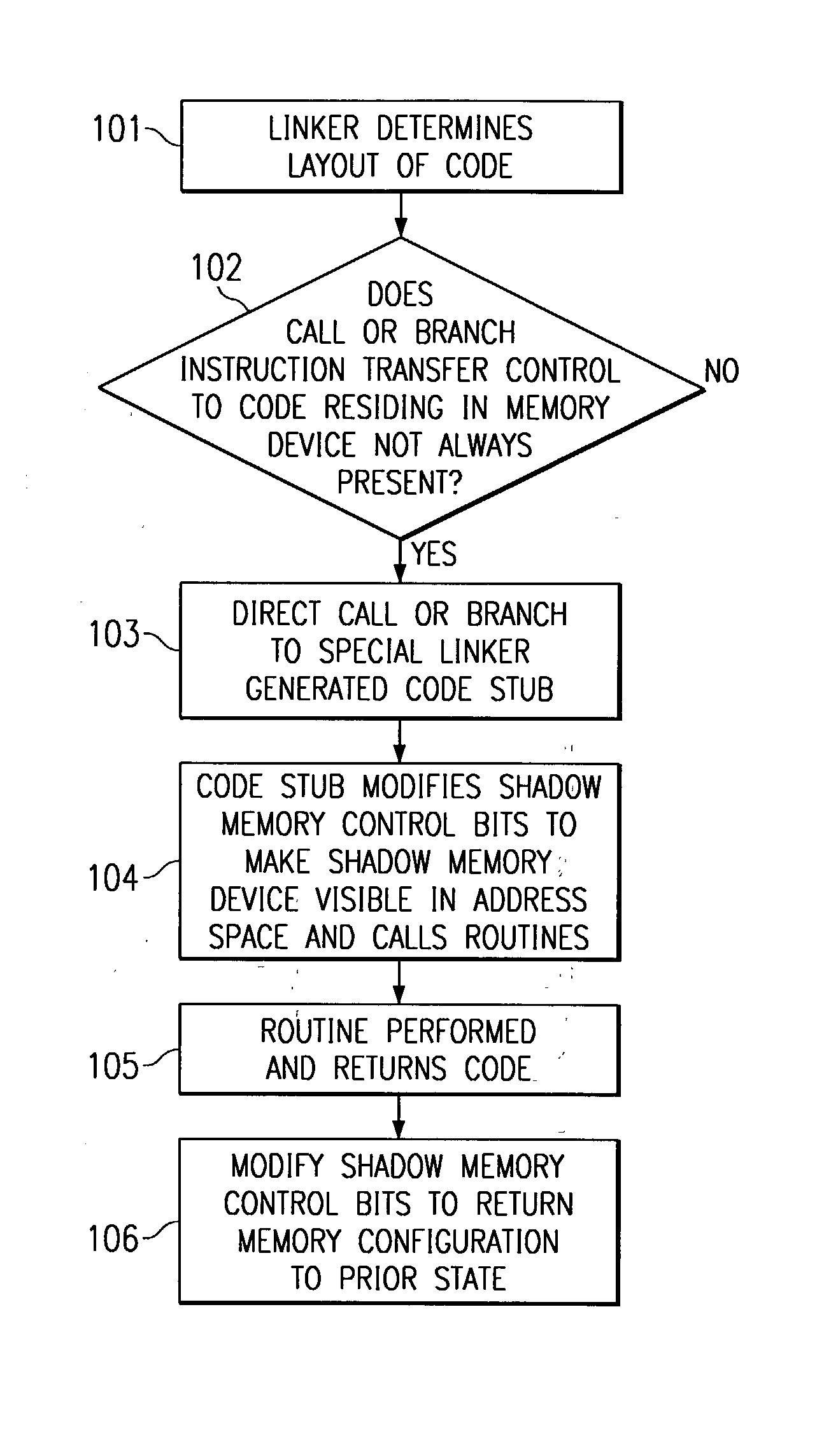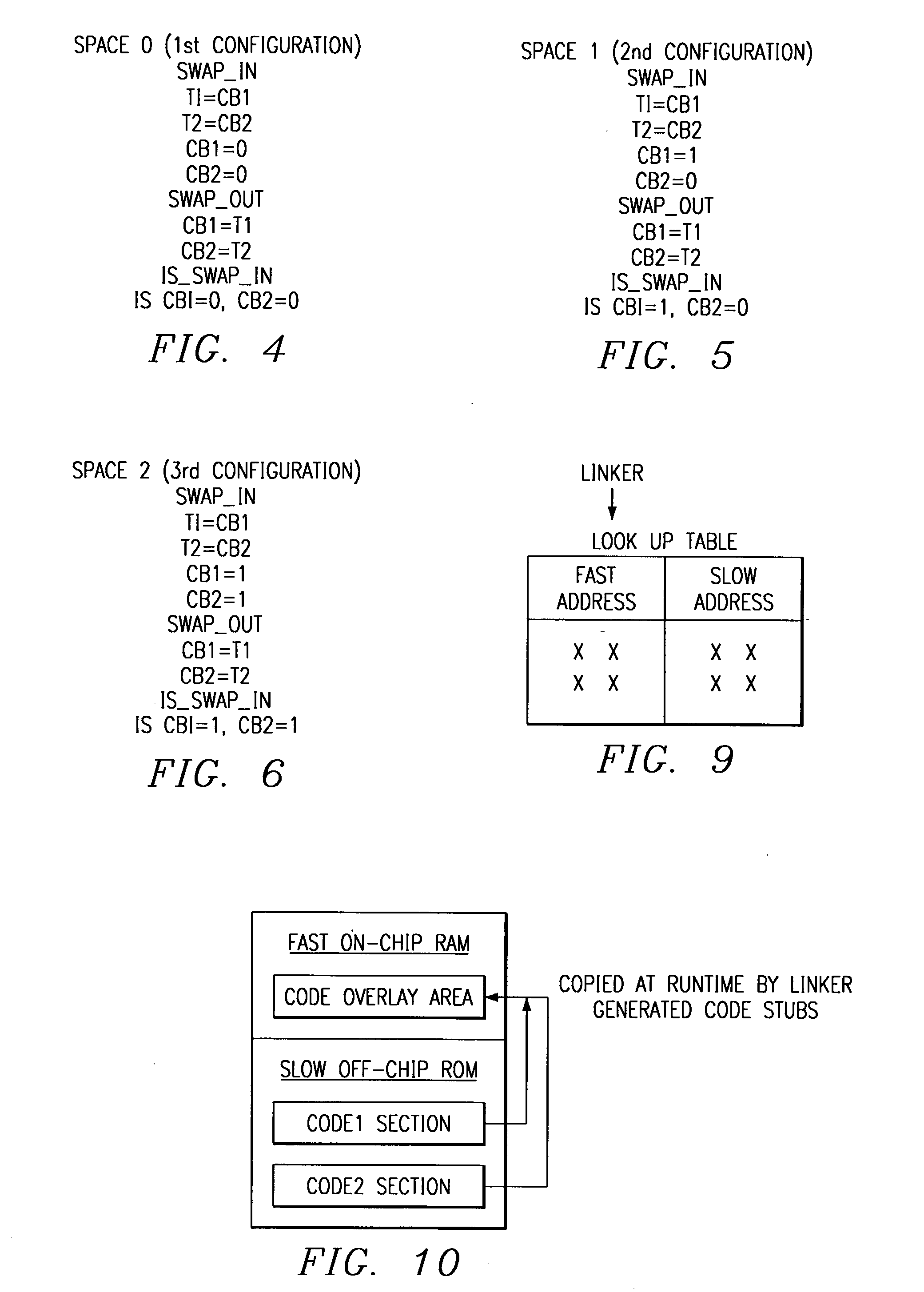Linking of applications into devices having overlays and shadow memories
a technology of shadow memory and application, applied in the direction of memory address/allocation/relocation, instruments, computing, etc., can solve the problems of not being software has not been able to effectively deal with multiple memory configurations within the same address space, and tools such as loaders and debuggers have no automatic/generalized support for downloading applications
- Summary
- Abstract
- Description
- Claims
- Application Information
AI Technical Summary
Benefits of technology
Problems solved by technology
Method used
Image
Examples
Embodiment Construction
[0022] Referring to FIG. 3 there is illustrated the system for embedding applications into a target processor system such as a DSP. The source programs 31 are compiled in a compiler 33 to object code and applied to a linker 35. Source code 37 may also be applied to the linker 35 via an assembler 34 to the linker 35. The linker 35 connects up all the pieces from the sources into one file. The linker 35 also directs where in the actual devices of the memory the different pieces of code / data are stored. The linker 35 provides the object code in one linked file. The downloader tool 37 takes the pieces of object code and places it into the memory devices of the target hardware system 41 such as a DSP. After the linked object file is loaded into the hardware 41 the hardware system is operated or application run and then debugged by a debugger 43. The debugger may physically be located in the downloader tool package.
[0023] In accordance with the present invention a description of the memor...
PUM
 Login to View More
Login to View More Abstract
Description
Claims
Application Information
 Login to View More
Login to View More - R&D
- Intellectual Property
- Life Sciences
- Materials
- Tech Scout
- Unparalleled Data Quality
- Higher Quality Content
- 60% Fewer Hallucinations
Browse by: Latest US Patents, China's latest patents, Technical Efficacy Thesaurus, Application Domain, Technology Topic, Popular Technical Reports.
© 2025 PatSnap. All rights reserved.Legal|Privacy policy|Modern Slavery Act Transparency Statement|Sitemap|About US| Contact US: help@patsnap.com



